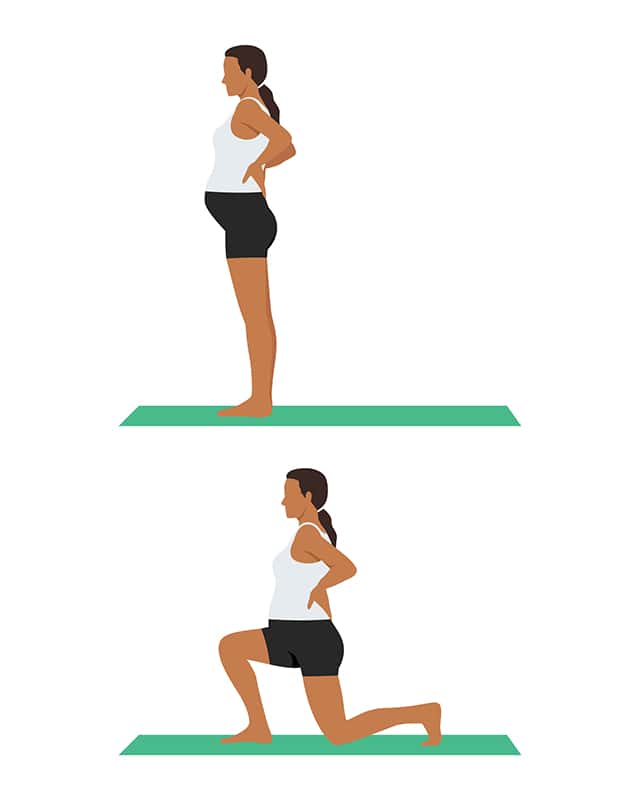It’s most likely pelvic girdle pain (PGP) if you’re trying to go about your day, but every time you move, a nagging pain in your lower back or front of your pelvis keeps you from doing what you need. It can be seriously inconvenient — not only does it affect everyday activities like standing up straight or moving around, but it can also affect posture during pregnancy and beyond. If that describes something you’ve been struggling with lately, the good news is that there are PGP treatments are available. But first, let’s understand what causes pelvic girdle pain.
What Is Pelvic Girdle Pain (PGP)?
If you’ve heard the term “Pelvic Girdle Pain” (PGP) thrown around but aren’t exactly sure what it means, don’t worry – you’re not alone. Pelvic girdle pain is the umbrella term for pain felt in the pelvic area, usually during pregnancy. It can range from mild discomfort all the way through to downright debilitating. It’s a common condition among expectant moms. While it doesn’t typically threaten your or your baby’s health, it can make the already challenging task of carrying a child much more difficult. If you’re experiencing any degree of pelvic girdle pain, it’s important to talk to your doctor or a physical therapist about how to manage and alleviate your symptoms.
More Blogs from Nancy Branberg
Effective Relief For Hip Tendonitis?
Salem Witch Trials: Historical Demonization Of The Female Body
Can Sexually Transmitted Infections Cause Pelvic Problems?
What Causes Pelvic Girdle Pain?
Many women suffer from what’s known as “pregnancy-related pelvic girdle pain” or PGP. The causes of PGP can vary from woman to woman. Still, some common culprits include changes in hormone levels, changes in posture, and increased pressure on joints due to weight gain. Some women may also be more susceptible to PGP due to genetics or previous injuries. While pelvic girdle pain can be incredibly uncomfortable, there are ways to manage the pain and ensure a healthy pregnancy. Consulting with a specially trained physical therapist and practicing gentle stretches or low-impact exercises can make all the difference. Remember, taking care of yourself during pregnancy is important- it’s also important for your growing little one. There are some other causes of pain in the pelvic girdle area, including:
-
- Muscle strain due to imbalance, overstretching, or incorrect posture: Imagine yourself at the gym, attempting to lift weights that are too heavy for you. Suddenly, you feel a sharp pain in your lower back or front of your pelvis. You try to ignore it, but the pain is intense. You have a muscle strain, likely caused by an imbalance or improper posture. Although muscle strains can happen to anyone, they are often the result of overstretching during exercise or lifting items that are too heavy.
- Degenerative changes in the joints due to aging: Our bodies tend to wear and tear as we age. Unfortunately, our joints are no exception. Degenerative changes in the joints around the pelvis due to aging are a common problem. This degeneration happens when the cartilage and fluid surrounding the joints break down, leading to stiffness, pain, and limited mobility. These changes can affect any joint, but we most commonly find them in the knees, hips, and hands. Nevertheless, it’s important to remember that there are ways to slow the progression of joint degeneration through exercise, good nutrition, and physical therapy. It’s never too late to take care of your joints.
- Abnormalities in the pelvis bones or joint structure: If you get pain or discomfort in the pelvic region/pelvic girdle, it could be the result of abnormalities in your pelvis bones or joint structure. These abnormalities can be caused by various issues, including an injury, prior surgery, or even a genetic condition. But regardless of the cause, you should consult with a specially trained physical therapist to properly diagnose and treat the issue. Ignoring it could lead to further complications and pain in the future. So, don’t hesitate to schedule an appointment if you’re experiencing discomfort in your pelvic area.
What Are The Symptoms Of Pelvic Girdle Pain?
While not uncommon during pregnancy, certain risk factors can increase your likelihood of developing PGP. Factors such as a history of lower back pain, previous hip injuries or surgeries, and a high BMI can all contribute to developing PGP, so it’s important to be aware of these risk factors and the symptoms and take preventative measures to avoid the discomfort of PGP during pregnancy.
The symptoms of pelvic girdle pain can vary from woman to woman, but some of the most common ones include pain in the pelvic area, lower back, and hips. Some women also experience a clicking or grinding sensation when moving their legs. Walking, rolling over in bed, or even getting out of a car can become extremely painful. It’s no fun, but there are ways to manage it. So, if you’re experiencing any of these symptoms, don’t hesitate to talk to book a consultation. We can help you find relief; if you are pregnant, we can make the remainder of your pregnancy more comfortable.
Treatment Options For Managing PGP
So, let’s talk about treatment options for managing PGP. Pelvic Girdle Pain (PGP) can be a challenging condition to deal with but don’t fret. There are several natural and non-invasive ways to manage the pain and discomfort. But the most effective option is physical therapy, which can help reduce pain while strengthening the muscles in your pelvic area. Another option is using maternity belts or supportive abdominal binder garments made specifically for pregnant women. These devices can alleviate pressure on your hips and support the pelvis.
Pregnancy is a miraculous journey, but it isn’t always easy. As your bump grows to accommodate your growing baby inside you, it can put undue pressure on your pelvic area, leading to discomfort and even pain. Investing in a supportive abdominal binder can work wonders in alleviating this pressure. It supports your burgeoning bump and helps remove some of the stress from your pelvic area, allowing you to move more freely and comfortably. They work well in combination with physical therapy. You can then focus on enjoying the magic of pregnancy without the discomfort.
Practicing good posture and avoiding activities that exacerbate the pain is also important. Practicing yoga poses and stretches targeting the hips, glutes, and lower back areas can also help ease tension and stiffness, enhance flexibility, and help reduce pelvic girdle pain. Try incorporating hip-opening poses like Pigeon Pose and Frog Pose, glute-strengthening exercises like Bridge Pose and Warrior III, and lower-back stretches like Cat-Cow and Child’s Pose into your routine.
Some women also find temporary relief from pelvic girdle pain with heat or ice packs. They can relax tense muscles, which goes some way towards reducing pain levels. It’s an easily accessible solution you can use from the comfort of your home in between physical therapy sessions that offer longer-term relief.

You should also check that you’re getting enough vitamins and minerals, particularly omega-3 fatty acids. Omega-3 fatty acids are essential for optimal joint health, and ensuring you’re getting enough of them in your diet can make a big difference to pain levels. These healthy fats can reduce inflammation throughout the body, including in your joints, leading to less pelvic pain and better movement. Good sources of omega-3 fatty acids that you might want to try include “fatty” fishes like salmon, mackerel, tuna, nuts, seeds, and even some fruits and vegetables.
Finally, a warm bath can be the ultimate relaxation technique, but adding Epsom salts to your bath can level up the muscle-relaxing and pelvic pain-relieving properties. Epsom salt, or magnesium sulfate as it is sometimes called, is known for its ability to help ease aches and pains in sore muscles and joints. The magnesium is absorbed through the skin by dissolving the salts in warm water and allowing your body to soak. It can help to reduce the swelling and inflammation and promote relaxation.
Ultimately, the best treatment plan will vary from patient to patient – depending on your specific symptoms. Still, the good news is that we can help.




